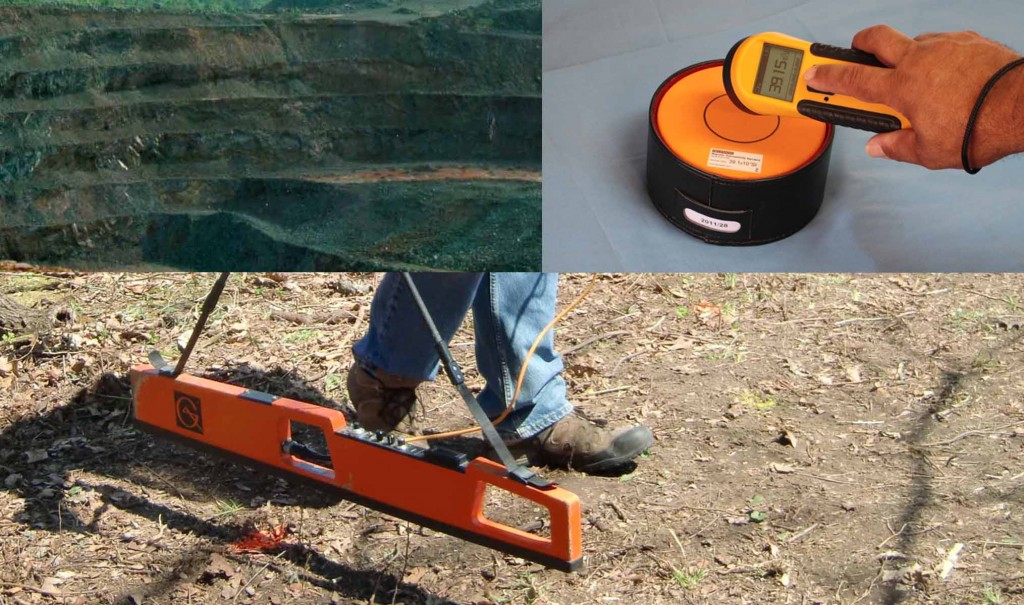TerraPlus and Geonics Manufacture
magnetic susceptibility meters to measure near surface magnetic susceptibility.
The TerraPlus KT-10 magnetic susceptibility meter is designed for small volumes of material. It is a hand held unit that is very portable and can be configured to measure conductivity. Measurements can be taken of in-situ material or on smaller samples. In comparison, Geonics EM-38 measures the magnetic susceptibility over a larger bulk volume of material with a depth of penetration of approximate 0.25 meters or 0.5 meters, depending on the instruments orientation. Because Geonics EM31-SH and EM31 measure the response of much larger volumes of material, these two instruments are often associated with metal detection and have an approximate depth of penetration of 1 and 2 meters. Measurements are not generally acquired over small samples. These three instruments also measure apparent conductivity. Follow this link to rent Geonics EM-31 or EM-34.
Magnetometers do not record magnetic susceptibility.
Magnetometers for geophysical surveys
measure the strength of the earth’s magnetic field. When the earth’s magnetic field passes through materials it responds to variations in the magnetic susceptibility of the material. Thus, when the earth’s magnetic field passes through a buried drum made of steel, the drum distorts the earth’s magnetic field. When the distorted field is mapped by measuring the strength of the magnetic field at the surface one can detect the buried drum, if it is not too deep. The magnetic susceptibility of materials plays an important role in the measured response of the magnetometer. In comparison, magnetic susceptibility meters produce their own primary magnetic field and do not depend on the earth’s magnetic field.
What is best to locate metal?
Metal is too general of a term
and needs to be better defined to answer this question. Most types of metal respond to an induced magnetic field from a magnetic susceptibility meter. As discussed above, the metal needs to be relatively close to the meter. In contrast, iron that a magnet sticks to or magnets produce very large distortions in the earth’s magnetic field. Other metals yield much smaller responses. Buried steel like underground storage tanks (USTs) or drums can be detected at great depths, if the mass increases with depth. If a site is not too culturally noisy, it may be possible to locate a locomotive buried 50 to possibly 100 feet deep. On the other hand if one is interested in locating different types of buried metal in the near the surface, then a Geonics EM-38, EM-31 SH, or an EM-31 may provide a suite of instruments for targeting various depths of penetration, between the surface and about 2 meters. Greater depths of penetration may be possible if there are no other sources to contribute to the response. The EM instrument’s ability to detect metal beyond the manufactures suggested depths decays off fairly fast. Visit Geonics to find out more.
